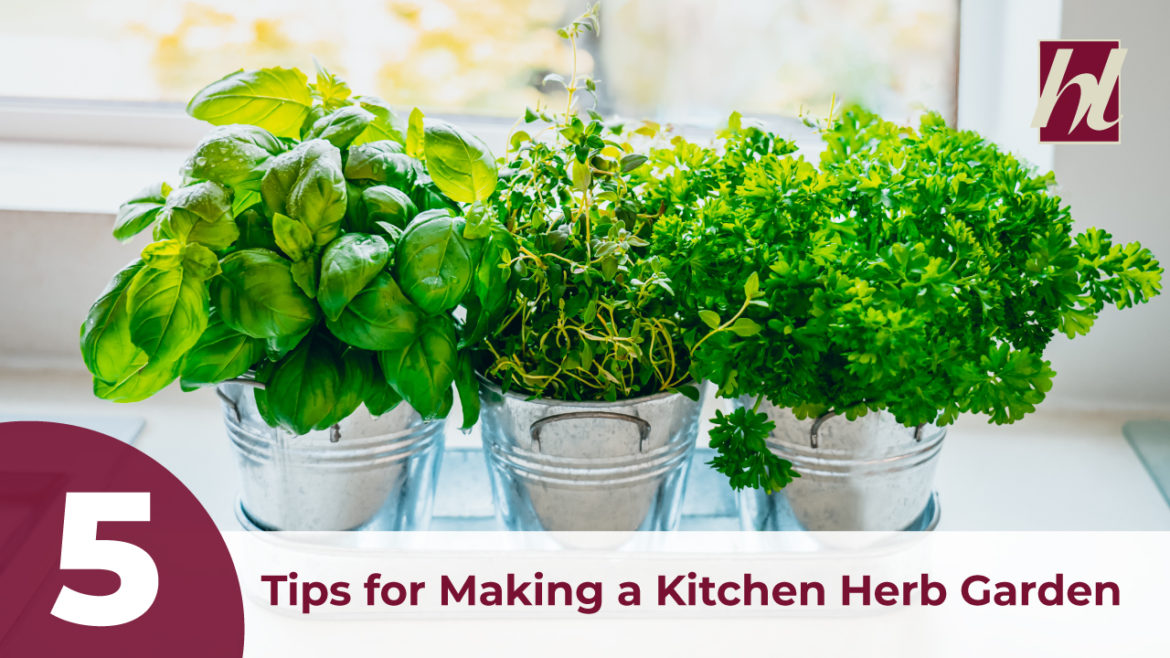5 Tips for Making a Kitchen Herb Garden
When it comes to creating a perfect home-cooked meal, fresh herbs are the perfect addition. The refreshing combination of rich flavors that a small amount of herbs can add to a dish and define it. When it comes to herbs, fresh is best.
If you are cooking regularly, or crafting meals for a larger family, having your own source of fresh herbs might make sense. This will allow you access to a plentiful supply of the freshest ingredients, livening up your meals and saving you trips to the grocery store.
However, creating a kitchen herb garden is no throw-away endeavor. A garden that flourishes takes time, intention, and the right knowledge. Let us help with that! Here are 5 tips for making your perfect kitchen herb garden.
1. Choose the Ideal Location
If possible, consider keeping your herb garden outdoors. Herbs require large amounts of sunlight (ideally, more than 6 hours per day), and this is often hard to achieve in a kitchen. If you are lacking the outdoor space, choose the room with the most natural light indoors to house your herbs. You can always invest in a lighting setup to ensure your indoor herbs grow healthily as well.
2. Invest in Mature Herb Plants
Unless you are planning on growing herbs on a very large scale, it makes much more sense to invest in mature, herb-bearing plants and foster them than it does to start with seeds. Planting and growing the seeds takes time and practice, during which time you’ll have no tasty additions to your meals. Opting for mature plants ensures that the growth process is already firmly established, so you can focus strictly on maintenance and cooking.
3. Grow What You Will Use
This might sound simple, but it bears emphasis. Investing in purchasing and growing herbs that you never use in your cooking does yourself (and the plant) a disservice. When you grow your garden, populate it with herbs you commonly use in your daily cooking. This will help give you the most benefit and fulfillment out of your garden.
4. Harvest Gradually
Your kitchen herbs won’t function like a crop of corn in the fall with one large harvest. Instead, trim from your plant only as you need to for your cooking. Herbs that are separated from the plant will not last long, so only taking what you need on a gradual basis will keep the plant healthy for longer.
Also take care to nip any buds or flowers that form right away. This will allow the plant to use its moisture and energy on the herbs themselves instead of on the process of flowering.
5. Group Plants that Will Thrive Together
Make sure to do enough research before deciding where and how to place each herb in your garden. Some plants such as rosemary and thyme prefer drier environments, whereas herbs like basil and mint require lots of water. It will help to determine ahead of time how many plots or planting boxes you will need, as well as how best to maintain each section. Also be aware of the growth tendencies of each herb when considering which other herbs to partner with it – some plants invade the space of others and could inhibit additional growth.
Spruce Up Your Home with House Lift
Small improvements can make a huge difference in your home. If you’re looking for more creative ways to upgrade your living space, consult the experts at House Lift. Our team of professionals will help you determine realistically and accurately what projects are right for you and your home. From the initial planning stage, through creation and design, to the successful completion of your remodeling project or home addition, House Lift has the extensive experience and expertise to make your dream home a reality. Learn more and contact us today at https://houseliftinc.com/.


No Response